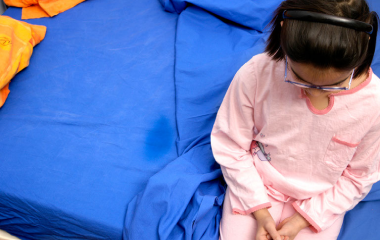Does your child have problems wetting the bed at night? Sleep-disordered breathing (SDB) – or sleep apnea – could be playing a role. A recent study, conducted on 5-10 year olds, searched for the link between SDB and tonsil and adenoid swelling in children with enuresis (bedwetting). The study also examined what part natriuretic peptide (BNP) levels in the brain play in measuring how severe SDB is in children who have enuresis. BNP is an amino acid that is produced by the heart when the heart muscle cells have been stretched.
There are two types of bedwetting. A child who is a primary bed wetter has not regularly stayed dry during sleep for 6 months straight. A person who is a secondary bed wetter has stayed dry for 6 months, but then starts bedwetting at least twice a week for about 3 months.
Surveys, taken by parents with 5-10 years olds, were reviewed for signs of SDB and bedwetting. The children with SDB were clinically examined. BNP levels were calculated in 33 children with SDB who wet their beds, and also in 30 healthy children who wet their beds.
Of the children studied, about 15% had primary enuresis, and about 47 children (30%) had SDB. However, there was a lower occurrence of SDB and bedwetting when age increased. BNP levels were much higher in children who wet the bed. Thirty-three children with bedwetting problems and SDB underwent adenotonsillectomies. Twenty-nine children improved; 15 were completely cured. All of the children with enuresis and SBD who had the surgery showed a big decrease in daytime enuresis.
If you think your child may have a sleep disorder, visit an AASM accredited sleep center.
Updated Aug. 14, 2019





